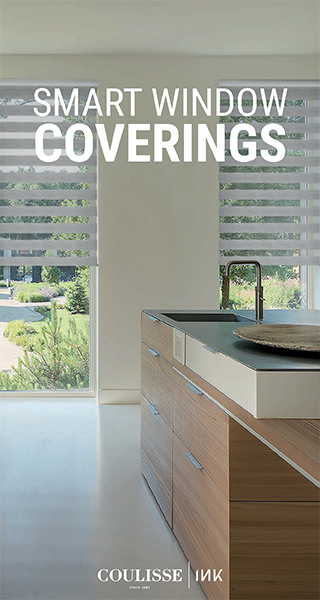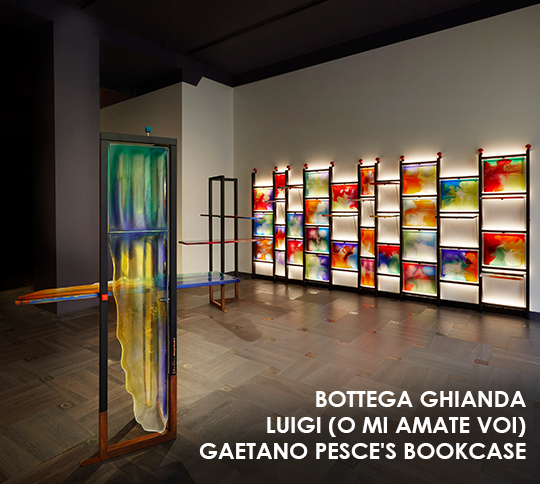
BOTTEGA GHIANDA: LUIGI (O MI AMATE VOI), GAETANO PESCE’S BOOKCASE
Published by Sugar & Cream, Monday 10 July 2023
Images and Text Courtesy of Bottega Ghianda
Milan Design Week 2023
During Milan Design Week 2023, Bottega Ghianda revealed Luigi (o mi amate voi), a bookcase by Gaetano Pesce. Luigi is the re-interpretation of the bookcase prototype by Gaetano Pesce in the early 1980s.
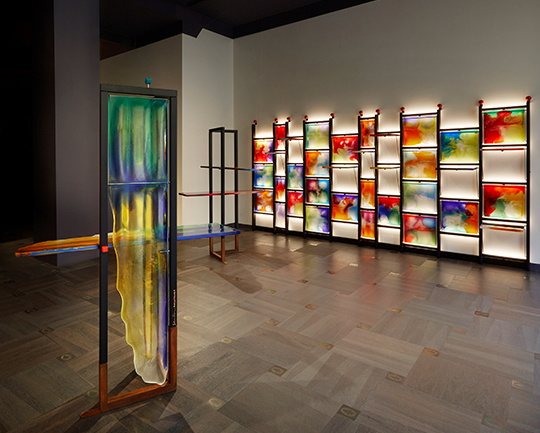
Objects change. Furniture evolves. Designs transform and dialogue with the changing times. Gaetano Pesce’s Luigi (o mi amate voi) bookcase is an emblematic example. It was originally prototyped in 1982, with the help of an Italian company that no longer exists it has been reissued by Bottega Ghianda with some significant innovations. In the 1980s prototypes, Pesce used wood. Whilst now it is a hybrid object in which the black-stained beech wood structure contains and borders shelves in resin. Being cast in a mould using unique and unrepeatable combinations of colours, melted materials, mixes and interpenetration.
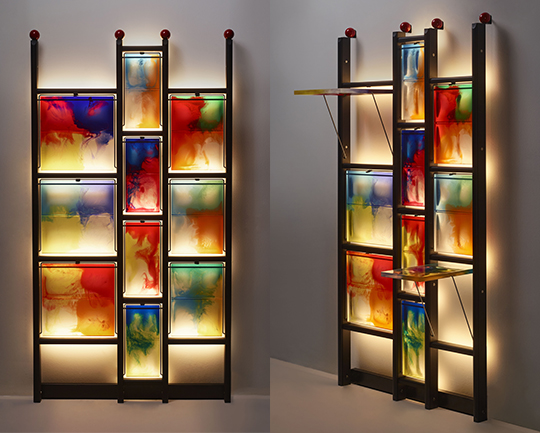
For a company like Bottega Ghianda, this is a daring and surprising turn: in the temple of cabinet-making and wooden traditions, Romeo Sozzi puts an unexpected material, such as resin, which is treated with the care, rigour and value, traditionally reserved for the most precious wood types.

Presented by Som Santoso
Faithful to his philosophy of manufactured product customisation, Gaetano Pesce, created a charming multi-purpose object. The pivoting shelves can be folded, whilst a LED light is housed within the structure to create a luminous wall, or theatrical backdrop. The light emphasises the resin’s translucence making the shelves emerge like floating galaxies, or a mysterious atlas of coloured Rorschach blots. The irregular resin mixtures combine with the rigour of the wooden structure that frames them through a network of squares and rectangles that recall the works of Mondrian.
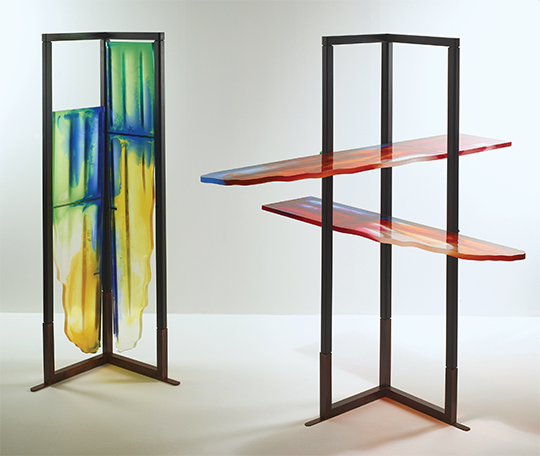
The cabinet is fixed to the wall at the top with red lacquered wooden ball stitching – almost a punctuation that dictates the wooden squares’ rhythm and modularity. Luigi (o mi amate voi) is placed in the domestic space as a unique polysemic object – a bookcase and scenographic backdrop and a luministic and chromatic device, resulting in a design dialogue with contemporary art.
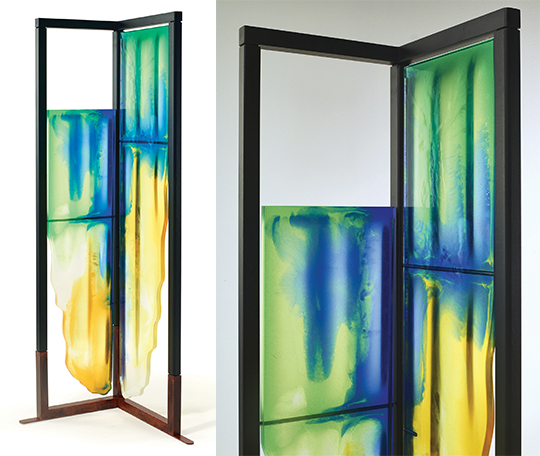
The name Luigi (o mi amate voi) refers and pays tribute to a master carpenter named Luigi who worked with Pesce at Cassina’s Research and Development Centre. A simple man with a fervent intelligence.
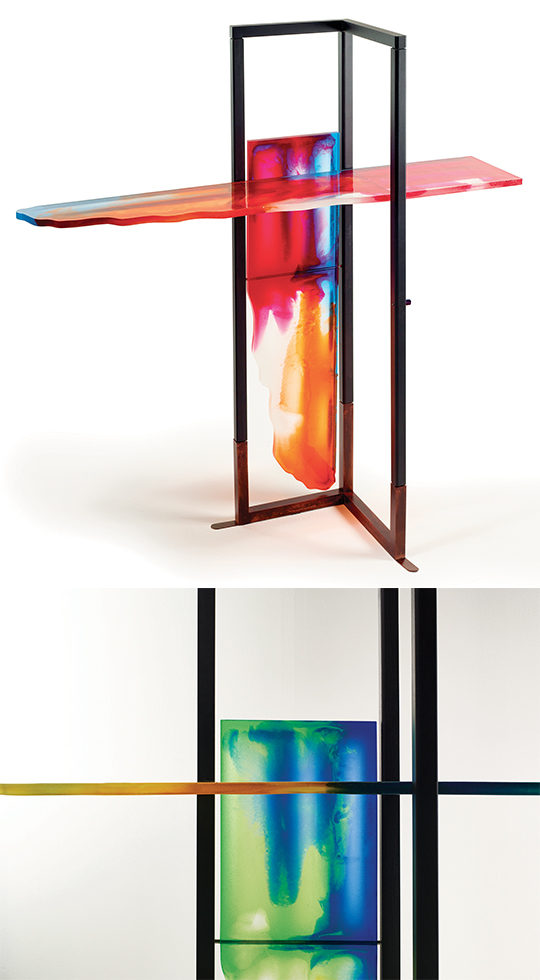
 2.30K
18/07/2025
2.30K
18/07/2025
SCULPTED BY NATURE: ALEXANDER LAMONT’S XXV COLLECTION
Alexander Lamont’s XXV Collection is a masterful tribute to nature and craftsmanship, where sculptural forms and exquiste materials converge in...
read more 527
18/07/2025
527
18/07/2025
CRÜ CORNER BISTRO AT KEMANG JAKARTA
A restaurant that embodies the idea of a bistro with a European flair, CRÜ Corner Bistro is a new culinary destination for foodies and provides a cozy...
read more 42.74K
11/07/2025
42.74K
11/07/2025
PELUNCURAN PERDANA LEGANO HOME MENGGANDENG AGAM RIADI DI ST REGIS RESIDENCE JAKARTA
Peluncuran perdana LEGANO HOME menggandeng Agam Riadi di St. Regis Residence Jakarta: menyatukan kemewahan dan jiwa dalam sebuah ruang.
read more 16.04K
04/07/2025
16.04K
04/07/2025
URBANJOBS UNVEILS INTERIORS FOR THE SCALLA RESTAURANT
SCALLA, a posh restaurant with a Mediterranean flair located in Istanbul's famed Beykoz neighborhood, has its interiors unveiled by URBANJOBS.
read more 75.36K
10/01/2025
75.36K
10/01/2025
W RESIDENCE IN SOUTH JAKARTA BY MICHAEL CHANDRA
Michael Chandra, founder of MNCO Studio Design has created the W Residence with an aesthetically pleasing, practical, and pleasant home from all...
read more 42.74K
11/07/2025
42.74K
11/07/2025
PELUNCURAN PERDANA LEGANO HOME MENGGANDENG AGAM RIADI DI ST REGIS RESIDENCE JAKARTA
Peluncuran perdana LEGANO HOME menggandeng Agam Riadi di St. Regis Residence Jakarta: menyatukan kemewahan dan jiwa dalam sebuah ruang.
read more





